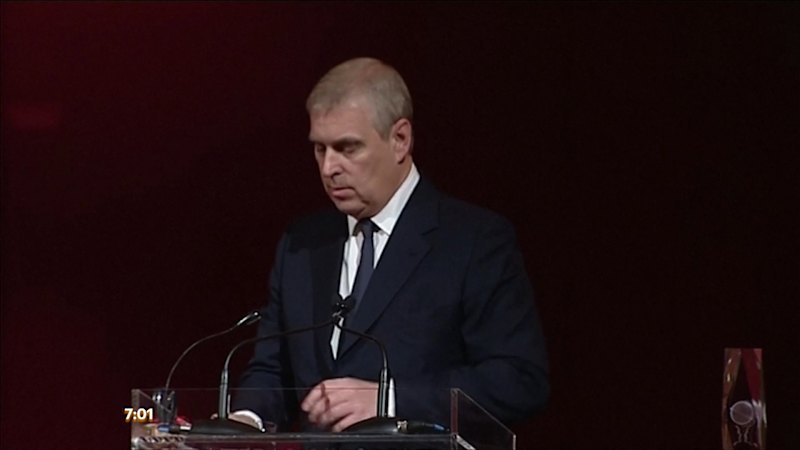ARTICLE AD BOX
A HORRIFYING nuclear disaster left a man crying blood, suffering constant heart attacks and even made his skin melt away.
Hisashi Ouchi, 35, was the most radioactive man in history after the Japanese power plant worker was put through 83 days of hell as doctors battled to keep him alive.
 YouTube/Peaked Interest
YouTube/Peaked Interest AP:Associated Press
AP:Associated Press YouTube/Peaked Interest
YouTube/Peaked Interest YouTube/Peaked Interest
YouTube/Peaked InterestBut after almost three months of unimaginable agony and torment, Ouchi ended up begging his family and doctors to let him die.
To make his life strapped to a hospital bed even more terrifying, he suffered dreadful brain damage every time his heart stopped beating.
One time Ouchi reportedly even suffered three heart attacks in a single hour due to intense organ failure.
The nuclear disaster that decimated Ouchi’s life happened September 30, 1999, in Tokaimura, Japan.
He was working a routine day shift at the Japan Nuclear Fuel Conversion Company alongside fellow worker Masato Shinohara and their supervisor Yutaka Yokokawa.
As the pair of untrained staff mixed a fresh batch of fuel they made the fateful mistake of chucking in seven times over the amount of uranium needed into the giant mixing vat.
Ouchi was ultimately the unlucky one who ended up looking directly into the mixing pot as the chilling reaction erupted.
Reports say a disastrous blue flash of light filled the room as deadly gamma rays flooded the plant and infected the surrounding town.
Radiation levels even shot up to 4,000 times over the typical levels.
This sickening reaction unleashed after the blast left Ouchi exposed to a devastating 17 sieverts of radiation.
Scientists say anything above seven is considered fatal.
His exposure is still the most radiation any human being has ever faced.
The plant was quickly evacuated and the three men were rushed to the National Institute of Radiological Sciences to be tested.
Ouchi was in immediate pain as his body writhed in agony as the chilling radiation burns scorched his entire body.
After spending most of the trip to the clinic barely breathing, the 35-year-old ended up vomiting before falling unconscious when he arrived.
Stunned doctors then discovered the biggest of Ouchi’s problems – his white blood cells had been burnt off leaving his immune system almost non-existent.
This left the technician badly compromised and his skin quickly started to melt away as streams of blood flowed from his eyes.
In the following days, Ouchi was kept in a special radiation ward to protect him from dangerous bugs and diseases.
All the while he cried for his mother who couldn’t go and see him.
As the painful days continued to roll on, Ouchi regularly suffered severe heart attacks as he legally died on several occasions.
But doctors kept on managing to revive him as his torture continued despite the best efforts of him family and carers to save his life.
After his first week in intensive care Ouchi was given countless skin grafts and blood transfusions to try and repair his dwindling body.
But horrific images of Hisashi Ouchi showed the skin grafts failing to stick to his body as his DNA was too weak and limited.
In a desperate attempt to help him out, doctors sent him to the University of Tokyo Hospital to undergo revolutionary stem cell treatment.
The treatment worked for a short time, prolonging his life, before his health rapidly declined again.
He then reportedly cried out: “I can’t take it anymore, I am not a guinea pig.”
Ouchi was finally freed from his torment after 83 days in December 1999, when his body completely flat-lined after a cardiac arrest.
Co-worker Shinohara was exposed to a worrying 10 sieverts in the blast and ended up dying years later of lung and liver failure on April 27, 2000.
As boss Yokokawa just faced three sieverts of radiation and went on to survive as he was sitting away from the reaction.
Following harrowing investigations into the brutal accident, it was found that the plant had a number of safety violations.
Workers are also believed to have been told to take an abundance of shortcuts to meet strict deadlines.
Overall, a staggering 667 people were treated for radiation exposure.
 YouTube/Peaked Interest
YouTube/Peaked Interest AP:Associated Press
AP:Associated Press.png)
 1 year ago
16
1 year ago
16








 English (US)
English (US)